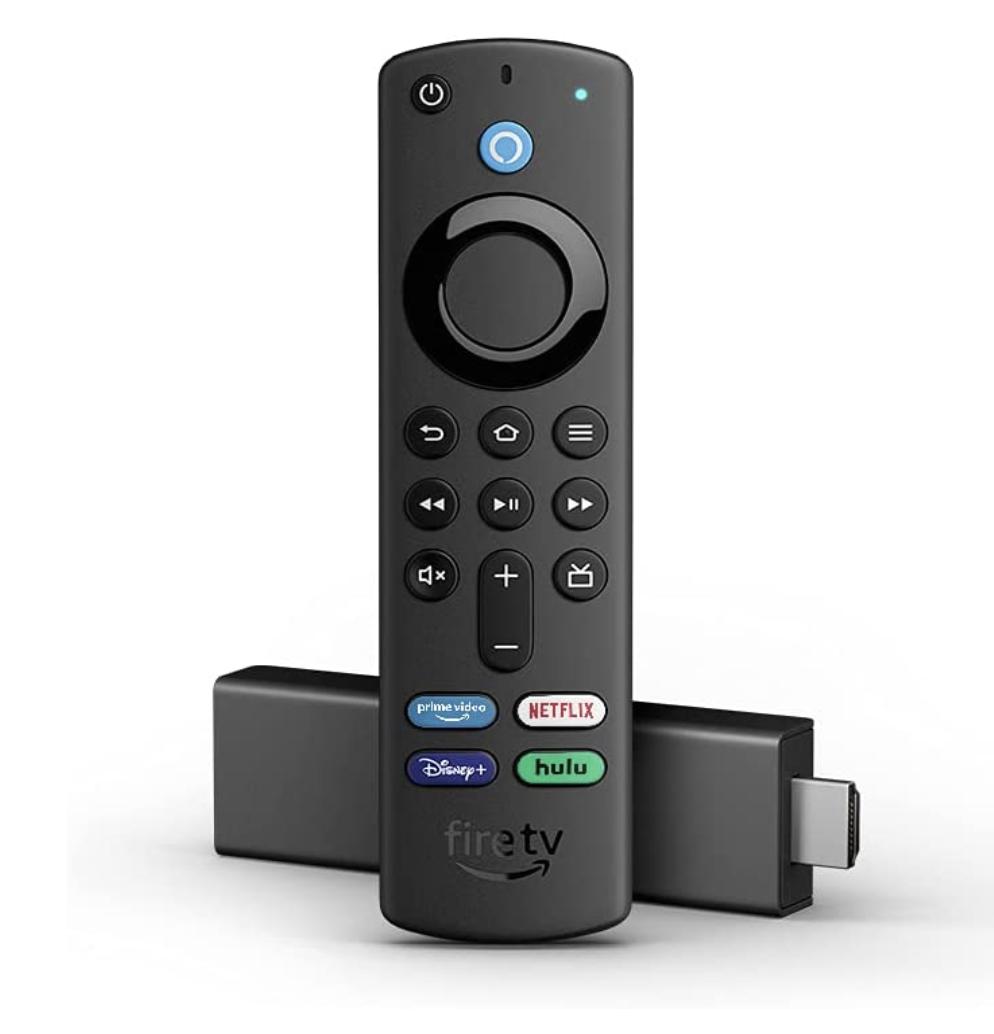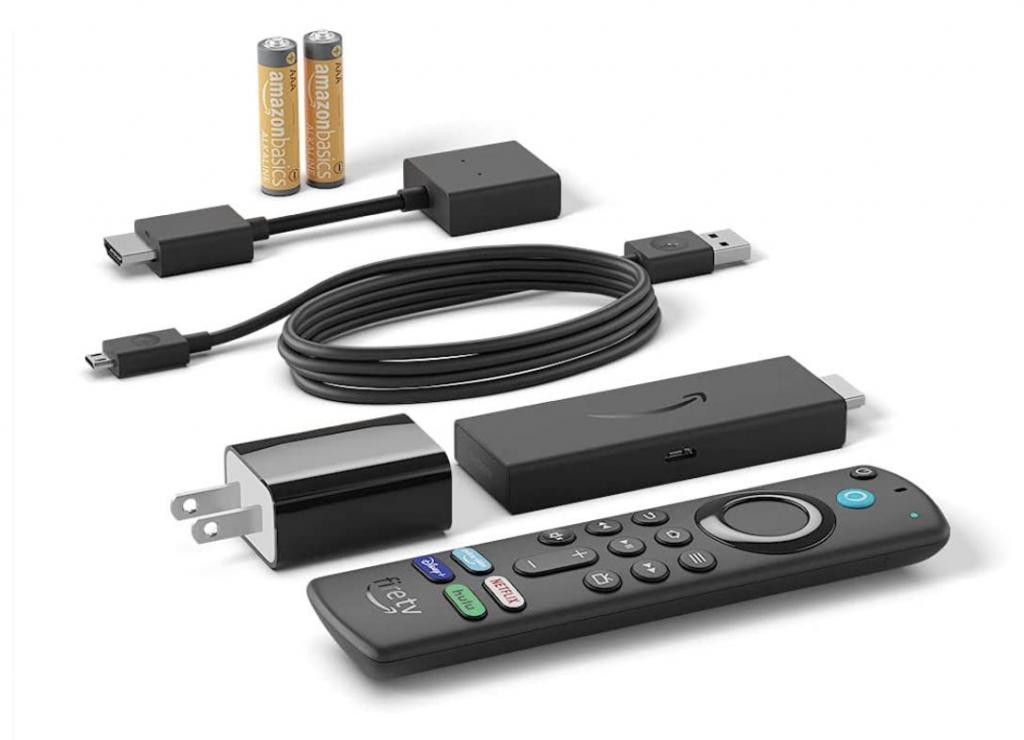
The Fire TV Stick 4K by Amazon is a streaming device that allows users to access a wide variety of content on their television, including movies, TV shows, music, and games. This useful device is about the size of a USB flash drive and plugs directly into a TV's HDMI port.
One of the best value propositions of the Fire TV Stick 4K is its ability to stream content in 4K Ultra HD resolution, which offers a much higher level of detail and clarity than standard HD. This makes the device a great choice for those who own 4K TVs and want to take full advantage of their display capabilities.
The Fire TV Stick 4K also supports high dynamic range (HDR) content, which provides more vivid colors and a wider range of brightness. This feature can be particularly beneficial for viewing TV shows and movies with many action or special effects.
The device is powered by a quad-core processor and comes with 8GB of storage. This gives it enough power to run smoothly and handle multiple apps at once without freezing or lagging.
One of the best features of the Fire TV Stick 4K is the Alexa Voice Remote. This remote allows users to control the device with their voice, making it easy to search for content and control playback without ever having to navigate through menus. The remote allows users to control other compatible smart home devices, such as lights and thermostats.
The Fire TV Stick 4K also includes a wide variety of apps and services, including popular streaming platforms such as Netflix, Prime Video, YouTube, and Disney+. This allows users to access a wide range of content in one place, without having to switch between different apps or devices.
Additionally, Amazon Fire TV Stick 4k can be used as a gaming device as well, with a good number of games available for downloading and streaming. Games range from simple and casual to high-end and graphically-intensive ones.

Here are a few pros of purchasing the Amazon Fire TV Stick 4K:
- 4K Ultra HD and HDR resolution: The Fire TV Stick 4K allows you to stream content in the highest resolution currently available on the market, which can enhance your viewing experience significantly, providing more detail and clarity.
- Alexa Voice Remote: This remote allows you to control the device using your voice, making it easy to search for content and control playback without ever having to navigate through menus, it also allows you to control other compatible smart home devices.
- Wide range of apps and services: The Fire TV Stick 4K includes a wide variety of apps and services, including popular streaming platforms such as Netflix, Prime Video, YouTube, and Disney+. This allows users to access a wide range of content in one place, without having to switch between different apps or devices.
- Affordability: The Fire TV Stick 4K is a cost-effective solution for those who want to upgrade their TV to 4K Ultra HD and HDR. It is less expensive than many other 4K streaming devices.
- Gaming: The Fire TV Stick 4K also offers some gaming capabilities, with a good number of games available for downloading and streaming, giving you the ability to enjoy a good gaming experience as well.
- Easy to setup and use: The Fire TV Stick 4K is very easy to set up, it is small and portable, easy to take with you when you travel, and easy to navigate.
- Versatility: The Fire TV Stick 4K allows you to access multiple apps, games and services on one device, making it a versatile solution to access a wide variety of content.
Here are a few cons of purchasing the Amazon Fire TV Stick 4K:
- Limited storage: The Fire TV Stick 4K comes with only 8GB of storage, this may not be enough for users who want to download a large number of apps and games, although it is enough for streaming.
- Limited compatibility: The Fire TV Stick 4K is only compatible with TVs with an HDMI port. If your TV does not have an HDMI port, you will not be able to use this device.
- Limited customization: The Fire TV Stick 4K has a more limited user interface than other streaming devices. This can make it less flexible for some users in terms of customizing the layout or installing third-party apps.
- A limited number of apps available compared to other streaming devices: Some apps may not be available on the Fire TV Stick 4K, particularly those that Amazon has not made compatible with its platform.
- Require a stable internet connection: The Fire TV Stick 4K requires a stable internet connection to stream content and play games, so a poor internet connection can affect performance and experience.
- Dependence on Amazon ecosystem: If you are not an Amazon Prime user, some features of the Fire TV Stick 4K may not be available to you, and some apps or streaming platforms may have a limited content selection.
- Limited voice command capabilities: While the Alexa Voice Remote allows you to control the Fire TV Stick 4K with your voice, its capabilities are limited compared to those of a standalone Alexa device.
Overall, the Amazon Fire TV Stick 4K is a powerful and versatile streaming device that offers a great way to access a wide variety of content in 4K Ultra HD and HDR resolution. The Alexa Voice Remote and the support for multiple apps and services make it a great choice for both casual viewers and hardcore cord-cutters.
The Fire TV Stick 4K has many pros, such as its 4K Ultra HD and HDR resolution, Alexa Voice Remote, a wide range of apps and services, affordability, gaming capabilities, and ease to use. The device can help you get the most out of your TV with high-quality streaming, games, and smart home integration.
However, like any other product, it also has some cons, such as limited storage, limited compatibility, limited customization, a limited number of apps, dependence on a stable internet connection and Amazon ecosystem, and limited voice command capabilities.
In conclusion, If you are looking for an affordable and easy way to upgrade your TV to 4K and HDR, and you are comfortable with the limitations and the dependence on the Amazon ecosystem, the Amazon Fire TV Stick 4K is definitely worth considering, you can buy it here.
The post Unlocking the Full Potential of Your TV with the Amazon Fire TV Stick 4K: A Comprehensive Review appeared first on Walyou.








